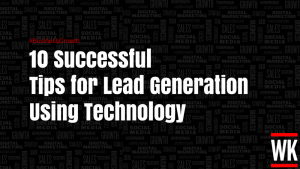Less than a decade ago, practices such as blogging and social media were considered as entirely separate entities. While blogging was seen as a serious, long-form channel through which to target traffic, for example, social media was a short-form and spontaneous platform that drove interaction with younger demographics.
We live in an age where a seamless consumer experience has become the Holy Grail for brands, however, meaning that social media and blogging should now be integrated across multiple platforms. This will not only improve the online visibility and value proposition of your brand, but it will also help you to optimise the impact of each individual discipline.
How to Integrate social and Blogging Platforms
More specifically, your blog can be used to add depth to your social media profile, while the social platform serves as a great medium through which to promote your blog. Integrating these two vast and popular channels must be done well if you are to be successful, however, and here are three steps towards achieving this: –
Merge social and Blogging Platforms with Actionable Buttons
This is the first, easiest and arguably most important step, as merging the two platforms enables the followers of both to successfully immerse themselves in your brand’s message.
It is also relatively easy to achieve, as you can simply add strategically placed social buttons to your blog home and prominent landing pages. These should ideally be positioned at the end of every single piece of content too, as they invite social media users across selected social platforms to interact with your brand on a wider scale. In fact, so long as you cultivate insightful and high quality content, you can compel readers to connect with the overarching brand by delivering genuine value.
You should also make your social icons bold and actionable, as this means that readers can connect with your brand’s integrated social profile with the single click of a button. You could even host a Twitter feed on your blog’s home page, as this will offer a summary of your activity on the site and direct readers to recent news and product developments. This drives a seamless user experience while adding another dimension to the appeal of your blog.
Empower the social sharing of your content with Social Icons
One of the biggest social media crimes is not committing to the platform, as many brands create an integrated profile before allowing this to become dormant over time. It is possible to underpin a successfully social strategy with high quality content, however, as you look to leverage specific posts to drive interaction through sites such as Facebook, LinkedIn, Pinterest and Twitter.
So how exactly do you achieve this? Firstly, you must invest in the creation of targeted content that is designed to suit specific social user demographics. From the professional users of LinkedIn to Pinterest’s vast female following, it is possible to target alternative social users with individual posts while maintaining a diverse and relevant blog. You can then add relevant social media icons to at the top and bottom of these posts, empowering readers to share content within their own network.
Further to this, you can increase the amount of social sharing options available by utilising the Share This feature. This enables you to incorporate multiple social icons from a larger menu, which in turn enables you to interact with a wider reader-base across different channels.
Encourage and Manage comments through the social sphere
For years, blog managers have moderated comments though Disqus and similar plug-ins. This has become increasingly unpopular in the age of social conversations, however, particularly for busy editors and readers who are often required to log-in using a personal email address and password.
This seems somewhat outdated in 2016, so it is important that you use an integrated social platform to solicit, manage and respond to blog post comments. There are several ways to do this, with the easiest being to cite the URL of your post when sharing it directly through mediums such as Twitter, Facebook and LinkedIn. You can also use a social or dedicated comment plugin to direct comments through Facebook or a similar outlet, responding directly and in real-time as they are shared by readers.
You can even syndicate posts through a Tumblr blog or within the social space, creating a dedicated platform for user interaction. Either way, this is an excellent way to further integrate blogging and social platforms while also driving higher levels of reader engagement and interaction.
Digital & Social Articles on Business 2 Community(16)






